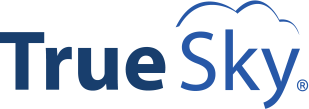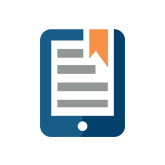How to Make a Rolling Forecasting Model Work for Your Healthcare Organization

Managing the finances of a major healthcare organization, like a hospital, requires a budgeting process that is as accurate, manageable, and transparent as possible.
With a large number of departments and both costs and incomes that can vary based on the whims of an insurance company, hospital finances can be fickle. This is part of the reason why many hospitals, as well as other healthcare organizations, are beginning to favor rolling forecasting over annual budgeting.
Aside from offering more flexibility and requiring fewer resources than a traditional annual budget, here are 4 steps to move your health care organization to a rolling forecasting model.
- Decide on the forecast horizon that will work best for your organization.
- Ensure you have the right technology in place to support a forecasting model.
- Switch to a driver-based planning model.
- Achieve buy-in at all levels of your organization.
Rolling forecasts are continuously updated, but that doesn’t mean that you have to budget on a short time horizon. Forecasts can be implemented as long as three or even five years out. However, according to the Healthcare Financial Management Association, you should look at this forecast as your strategic, long-range plan and update it annually. You can simultaneously use a short-term rolling forecast that covers the next one or two years. This is the one you’ll update on an ongoing basis.
When deciding on the time range that you want to cover, pay close attention to the resources you have available. Can you provide useful data to populate the forecast as far as five years out? If not, then there’s no use planning that far ahead.
If the software you’re using doesn’t easily support forecasts, you and your team will end up losing hours to figuring out how to make your forecasts workable.
Instead, once you’ve decided to switch to a rolling forecast, spend some time looking at budgeting, planning, and forecasting solutions that can support what you want to do.
True Sky offers a host of features designed to make your forecasting as accurate and easy to implement as possible, including the ability to create what-if scenarios and increase accountability by tracking. each individual’s progress throughout the budgeting or forecasting cycle.
If you’re going to be using forecasting, you also need to make the switch to driver-based planning, if you haven’t already. Driver-based planning focuses on the business drivers that impact your success today and in the future. This is as opposed to outcomes-based planning, which is based on historical data.
For forecasting to be successful, you must use driver-based planning. If you’re still operating on outcomes-based planning, it will take some time to make the organizational shift, but the change will be well worth it. To learn more, read our blog post “Making the Switch from Annual Budgeting to Rolling Forecasting.”
This may actually be the most difficult part of changing to rolling forecasting. As CFO, you’ve got the tough task of convincing your colleagues to stop budgeting the way they’ve always done it, and embrace something new – a hard sell no matter what.
However, if the rest of the executive team is not on board, you’ll be facing an intense uphill battle when it comes to implementing your rolling forecast model. The same is true for the rest of your finance team, as well as your departmental managers.
One key to changing your co-workers’ minds is to give them the right tools to do what you’re asking them to do. If you’re using the right software, as mentioned earlier, they’ll have a much easier time making the switch – especially if it means they have to spend less time than they used to on a budget, which will most likely be the case.
Learn more about how True Sky can help your organization here.



